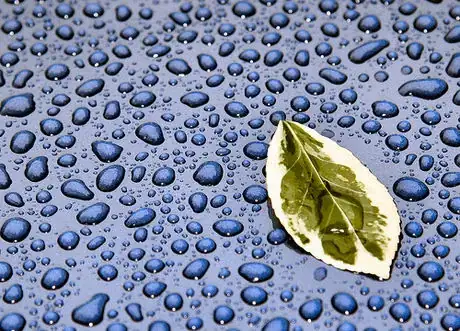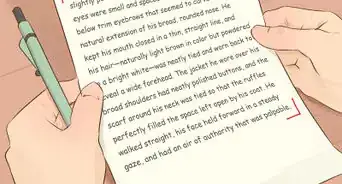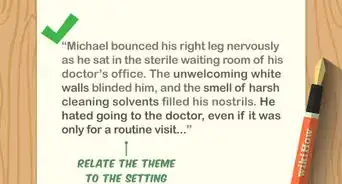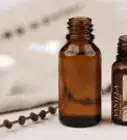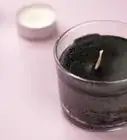This article was co-authored by wikiHow Staff. Our trained team of editors and researchers validate articles for accuracy and comprehensiveness. wikiHow's Content Management Team carefully monitors the work from our editorial staff to ensure that each article is backed by trusted research and meets our high quality standards.
wikiHow marks an article as reader-approved once it receives enough positive feedback. In this case, 89% of readers who voted found the article helpful, earning it our reader-approved status.
This article has been viewed 620,314 times.
Learn more...
We have plenty of words to describe other senses and experiences, but the sense of 'smell' seems to defy words. The human sense of smell is not heavily used compared to that of many animals. Still, it's a deep and rich sense, and it can enhance how you communicate (especially when you're crafting a story or describing a moment).
It can enhance how you experience your other senses (particularly taste, such as tasting complex flavors in wine and dark chocolate), and even with determining when fruit is ripe or milk is spoiled. If you'd like to pin down a smell in words, here are some tips that can help you.
Steps
-
1Identify your reason for describing the smell. Why do you want to communicate it? Your description may be different depending on whether you are writing a technical manual or writing a poem. If you're describing the smell aloud, your tone of voice and body language may lend an additional level of meaning.[1]
- Do you want to capture the nature of the smell or the overall quality?
- Do you want your reader or listener to recognize an unfamiliar smell based on your description?
- Do you want to evoke a certain meaning or feeling in your reader?
-
2Observe the smell. If it is possible and safe to do so, smell what you wish to describe. Pay full attention to it.[2]
- Remove distractions. Don't smoke or wear fragrances or drink strongly scented beverages.
- Take breaks. The sense of smell acclimates or becomes accustomed to a smell. Remove the smell or remove yourself from the smell for a while if you stop being able to smell it or smell it distinctly.
Advertisement -
3Notice any words, images, feelings, or memories that the smell brings to mind. If you have any sort of gut reaction, pay attention to it. Make notes if you can, even if they're disjointed.
-
4
-
5Use adjectives. Adjectives can describe the general, overall quality of the smell. Wispy, rancid, airy, musty, stale, fresh, putrid, faint, light, floral, and acrid are all adjectives that could pertain to smell.[4]
- Smell origins may take the form of a noun (the smell of leather) or an adjective (a leathery smell). The adjective may describe the effect where the noun describes a specific source.
- Use imaginative adjectives. Saying that a vile smell was "like sucking puss out of a festered wound" does not actually describe the smell as such, but pulls on so many different thoughts and memories that the mind races to label it odious.
-
6Use nouns. Often a smell will conjure thoughts of its source. Does your smell remind you of strawberries? Like fresh rain?
- Be specific. Smoke smells different depending on its source. Can you tell the difference between smoke from a campfire and a wildfire? Between cigarette, cigar or pipe smoke? Could you recognize burning rubber or a vehicle that was burning oil purely by the smell of it?
- Be creative. What does spring smell like?
-
7Use verbs. Verbs are strong, direct, active words.[5]
- Use verbs for the smells themselves. Smells can waft, distract, hint, permeate, suggest, confuse, conjure images, command attention, or intrude upon the consciousness.
- Use verbs to describe the source of the smell. Here are some actions that you might associate with smells: baking, frying, digging, sweating, burning, rotting.
- Visualize what the smell does. Does it creep into your nose? Wrap around you? Follow you? Bombard your nostrils?
-
8Borrow words associated with other senses. Smell doesn't have a lot of vocabulary of its own, but many other senses do, and they can suggest the quality or nature of a smell.
- Sight. Can a smell be bright or dark? Can a smell be pink or green? Can it be clear or hazy? Can it be fast? Slow? Sluggish? Smooth?
- Sound. Can a smell be dissonant? Harmonious? Loud or quiet?
- Touch. Can a smell be sharp or dull? Even or jagged? Smooth or rough? Heavy or light? Cool or hot? How would you physically react to the smell? Would you relax or stiffen, pucker, or make a face?
- Taste. Smell is closely associated with taste, so tastes are a good choice if they fit. Is a smell sweet or sour, salty or bitter? Is it chocolaty, fruity, or yeasty?
-
9Consider what feelings and emotions a smell evokes, especially if you are using it as a literary device. Smell can conjure associations with particular events or general thoughts or emotions.
- Is the smell startling or jarring? Soothing or comforting? Earthy or natural? Chemical or antiseptic?
- Smell is often strongly associated with memories, but this is only useful if you're describing the smell to yourself (such as in a journal) since you can't know what somebody smelled in their memories.
-
10Use metaphor. If you're writing poetry or trying to evoke an emotion, metaphor might be a good device. A smell can't really grab someone by the nose or stab someone, but this might be a powerful description.
Sample Descriptions of Smells
Community Q&A
-
QuestionHow do I describe the smell of a particular room?
 Community AnswerThink about what is in that room, where the room is, what do the things in the room smell like. For example, bathroom at your grandmother's house will smell a lot different than the one at a hotel, or restaurant.
Community AnswerThink about what is in that room, where the room is, what do the things in the room smell like. For example, bathroom at your grandmother's house will smell a lot different than the one at a hotel, or restaurant. -
QuestionDo you have any suggestions on how to describe the rise of smoke from burning wood?
 Community AnswerYou can describe the color of the smoke and the patterns it make as it rises. The smell may be evocative of old memories.
Community AnswerYou can describe the color of the smoke and the patterns it make as it rises. The smell may be evocative of old memories. -
QuestionHow do I describe the smell of birthday cake?
 Community AnswerYou can describe the smell of the icing, and think about what type of cake it is (e.g. chocolate cake, sponge cake, etc.). You can also describe the smell of the filling and the smell of the candles when they are lit.
Community AnswerYou can describe the smell of the icing, and think about what type of cake it is (e.g. chocolate cake, sponge cake, etc.). You can also describe the smell of the filling and the smell of the candles when they are lit.
Warnings
- Some smells signal hazards. If you smell gas, chemicals, or something unknown and worrisome, avoid breathing it and report it to authorities as appropriate.⧼thumbs_response⧽
References
- ↑ https://www.butte.edu/departments/cas/tipsheets/style_purpose_strategy/descriptive_essay.html
- ↑ https://www.epa.vic.gov.au/report-pollution/report-odour/describe-odour
- ↑ https://marymckernan.com/describing-smells/
- ↑ https://grammar.yourdictionary.com/style-and-usage/descriptive-words-for-scents.html
- ↑ https://www.epa.vic.gov.au/report-pollution/report-odour/describe-odour
About This Article
To describe a smell, take some time to sit with it and jot down any words, images, or emotions that come to mind when you’re smelling it. You can describe the quality of the smell with adjectives like “musty” or “putrid,” or you might choose adjectives that describe its source, like “skunky” or “floral.” Try to be specific and detailed, but keep your language simple so the description isn’t overblown. For more tips on describing a smell, like how to borrow words from other senses, keep reading!

